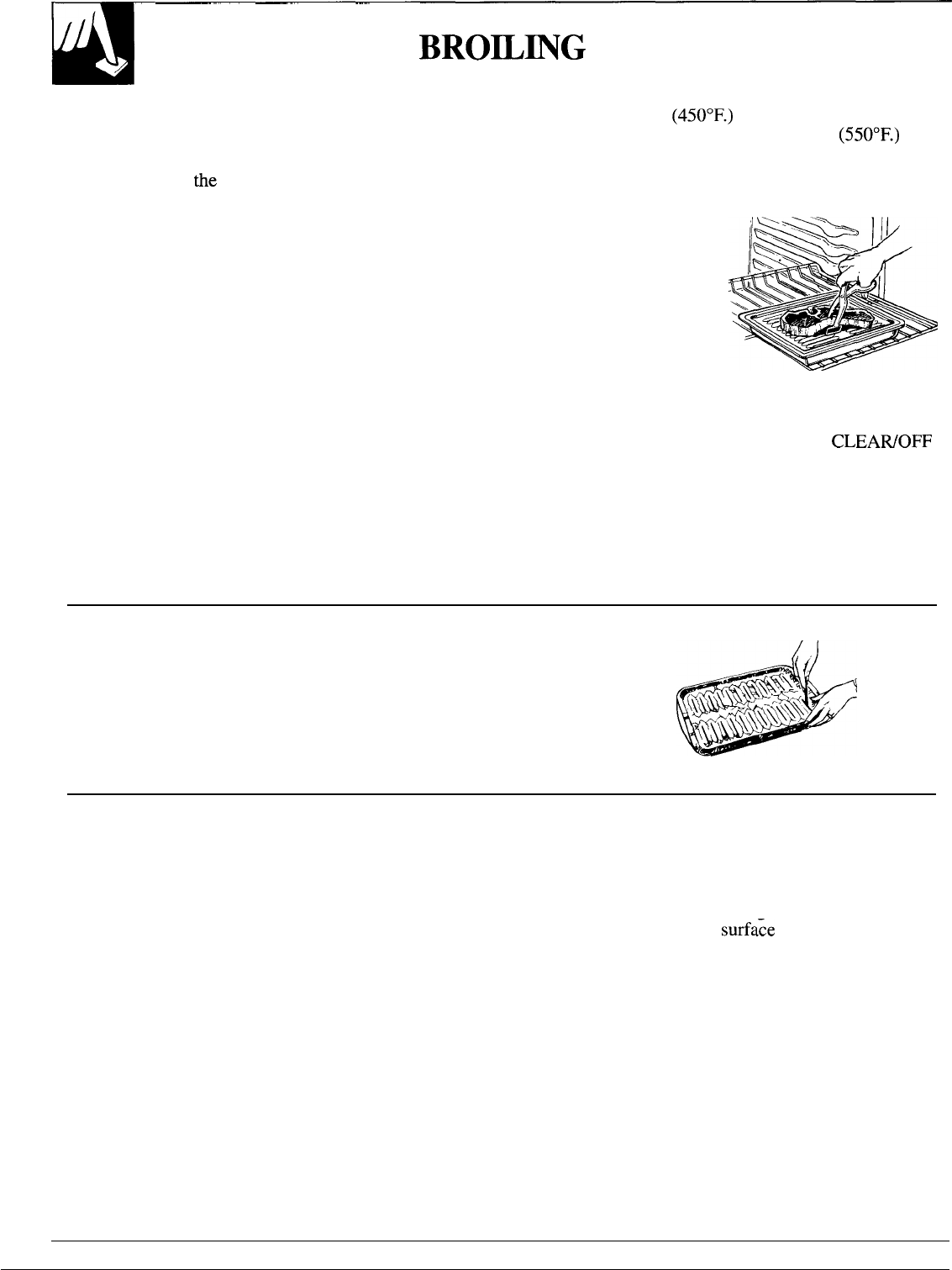
BRO~~G
Do not lock the oven door with the latch during 6. Select LO Broil
(450°F.)
by pressing the
broiling. The latch is used for self-cleaning only. INCREASE pad once. Select HI Broil
(550°F.)
by
Broiling is cooking food by intense radiant heat from
pressing the INCREASE pad twice.
the upper unit in
the
oven. Most fish and tender cuts
To change from HI Broil to LO Broil, press the
of meat can be broiled. Follow these steps to keep
BROIL pad then press the DECREASE pad once.
spattering and smoking to a minimum.
7. Turn food only once
The oven door should be closed during broiling.
during cooking. Time
1. If the meat has fat or gristle near the edge, cut
foods for first side
vertical slashes through both about 2“ apart. If
according to the
desired, the fat may be trimmed, leaving layer
Broiling Guide.
about 1/8” thick.
Turn food, then use
2. Place the meat on the broiler rack in the broiler pan.
times given for second
Always use the rack so the fat drips into the broiler
side as a guide to
preferred doneness.
pan; otherwise the juices may become hot enough
(Where two thicknesses and times are given together,
to catch fire.
use first times given for thinnest food.)
3. Position the shelf on recommended shelf position
8. When broiling is completed press the
CLEAWOFF
as suggested in Broiling Guide.
pad. Serve food immediately, and leave pan outside
4. Close the oven door but do not latch it. If the door
oven to cool during meal for easiest cleaning.
latch is moved to the right during a broil
operation, the door may lock and you may not be
able to open it until the oven cools.
5. Press the BROIL pad.
Use of Aluminum Foil
You can use aluminum foil to line your broiler pan and broiler rack. However,
you must mold the foil tightly to the rack and cut slits in it just like the rack.
Without the slits, the foil will prevent fat and meat juices from draining to the
broiler pan. The juices could become hot enough to catch on fire. If you do
not cut the slits, you are frying, not broiling.
Questions & Answers
Q. When broiling, is it necessary to always use a rack
Q. Do I need to grease my broiler rack to prevent
in the pan?
meat from sticking?
A. Yes. Using the rack suspends the meat over the
A.
pan. As the meat cooks, the juices fall into the pan,
thus keeping meat drier. Juices are protected by the
rack and stay cooler, thus preventing excessive
spatter and smoking.
Q. Should I salt the meat before broiling?
No. The broiler rack is designed to reflect broiler
heat, thus keeping the
surfa~e
cool enough to
prevent meat from sticking to the surface.
However, spraying the broiler rack lightly with a
vegetable cooking spray before cooking will make
clean up easier.
A. No. Salt draws out the juices and allows them to
Q.
Why are my meats not turning out as brown as
evaporate. Always salt after cooking. Turn meat
they should?
with tongs; piercing meat with a fork also allows
A. Check to see if you are using the recommended
juices to escape. When broiling poultry or fish,
shelf position. Broil for longest period of time
brush each side often with butter.
indicated in the broiling Guide. Turn food only
once during broiling.
20


















